More Than Skin–Creating Total Facade Designs
Energy Conserving Fenestration Systems
Fenestration usually figures prominently in most building facades and the key to a successful installation is a manufactured frame to hold the fenestration in place, secured to the rest of the building. The material of choice is usually an aluminum frame or support system. Such aluminum frames are lightweight but inherently strong, can avoid rust or corrosion, are rather economical to work with, and are available in a variety of colors and finishes. Nonetheless, aluminum is also an excellent conductor of heat which makes its use on building facades a concern when addressing energy conserving design and compliance with energy codes – the aluminum acts as a thermal bridge between inside and outside. This is true in both cold and warm climates as well as extreme weather conditions.
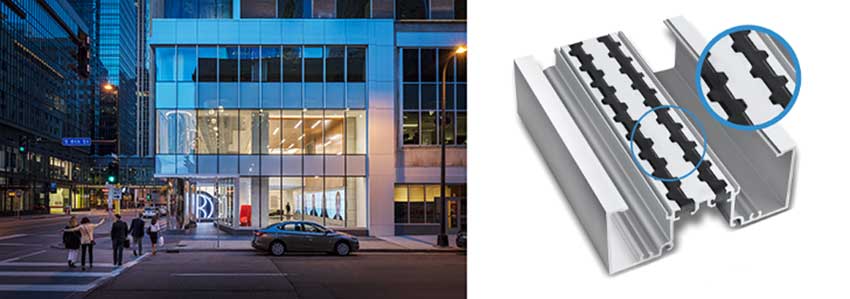
Photo courtesy of Azon; Paul Cosby Architectural Photography
The aluminum framing used in fenestration systems include tested and proven thermal breaks or barriers to improve thermal performance while maintaining structural integrity and overall performance.
Manufacturers of aluminum framing systems for fenestration continue to develop products that maintain their structural integrity while offering improved thermal performance. The key component is the addition of a thermal break or barrier in the aluminum frames, usually in line with the location of glass or other glazing in the frame. The intent is that the interior and exterior portions of the frame are separated with a structurally rigid but less thermally conductive material. The details of how that break is created and the choice of materials used are what tend to differentiate various products from each other.
Commonly there are three choices of material used as thermal breaks or barrier material in commercial fenestration systems, namely, vinyl plastic, polyamide nylon or polyurethane polymer. Each have different thermal and structural properties so finding the best choice is a combination of understanding those properties and the way they work with the details of a particular aluminum frame profile.
Improved Thermal Breaks
Polyurethane has received a good bit of attention as a thermal barrier material in aluminum frames since it can provide superior thermal performance to other choices. For example, in at least one frame comparison, a polyamide thermal barrier was used to achieve a U-factor of 0.39 but required a 24 mm gap to do so. By contrast, a polyurethane barrier was used to also achieve a U-factor of 0.39 but only required a 15.8 mm gap. A smaller gap can mean better structural performance of the frame and possibly thinner overall profiles of products. Hence, achieving better thermal performance in thinner breaks has advantages when seeking to create better fenestration products that allow better sightlines, more structural integrity, and durability.
The most effective way to create a thermal break is referred to as a “pour and de-bridge” process. An extruded aluminum profile is designed with a strategically placed U-shaped channel in the middle of the frame piece. Once ready, the thermal barrier material is installed using specialized equipment designed for this purpose. If polyurethane is used, it is literally poured in liquid form into the pre-designed channel. Within minutes the polyurethane solidifies into a very strong structural polymer. Then the metal thermal bridge is cut and removed from the bottom of the channel to produce a true, non-metal-to-metal structural thermal barrier. This pour and de-bridge method is suitable for withstanding demanding climates and conditions with high performance requirements in terms of impact resistance, shear strength and heat distortion.
Architectural Glass
Glass is recognized by many architects as one of the most popular and versatile building facade materials in use while also providing a dramatic aesthetic. Additionally, glass can provide daylit interiors that boast a range of benefits, such as improved occupant mood and productivity, a sense of connectivity to the outdoors, decreased use of artificial light and energy, stunning views, and excellent color transmission. But the design beauty of glass is pointless if the people inside the building are uncomfortable or if energy inefficiency makes the building too expensive to operate.

Photo courtesy of Vitro Architectural Glass
Advanced low-e coatings on low-iron glass produces desirable, energy-efficient spaces, such as the spheres at Amazon Headquarters designed by NBBJ in Seattle, Washington.
In response to the energy needs, low-emissivity (low-e) glass coatings have been used that minimize the amount of ultraviolet and infrared light that can pass through glass without compromising the amount of visible light that is transmitted. A microscopically thin transparent coating allows low-e glass to reflect exterior heat in warm temperatures and hold in heat during cold temperatures. For situations where the highest amount of visible light or clarity of views are sought, low-iron glass is often used in an insulating glass unit (IGU) to receive the low-e coating. Traditional glass carries a green tint which is amplified as the thickness of the glass increases. Low-iron glass makes that tint much less pronounced.
Energy-efficient, low emissivity (low-e) glass products have been used on hundreds of sustainable projects worldwide, yet even with all these accomplishments, glass manufacturers continue to innovate and offer new product options.
Vacuum Insulating Glass (VIG)
One of the latest architectural glass innovations is Vacuum Insulating Glass which consists of two lites of glass separated by a metal seal and a vacuum space between the lites. With center of glass R-values of R14 and higher, this advanced glazing can deliver thermal performance much closer to an opaque insulated wall than a traditional window. VIG units enhance the performance of any glass configuration by effectively blocking thermal transmission, delivering thermal insulation performance that is two to four times better than conventional insulating glass and up to 14 times better than monolithic glass. The slim construction and light weight of VIG units allows them to be incorporated into virtually any traditional glazing system, window frame or curtainwall application. The heat transfer coefficient of VIG remains constant regardless of whether it’s mounted horizontally or with an angle, making it suitable for installation at any position around the building.
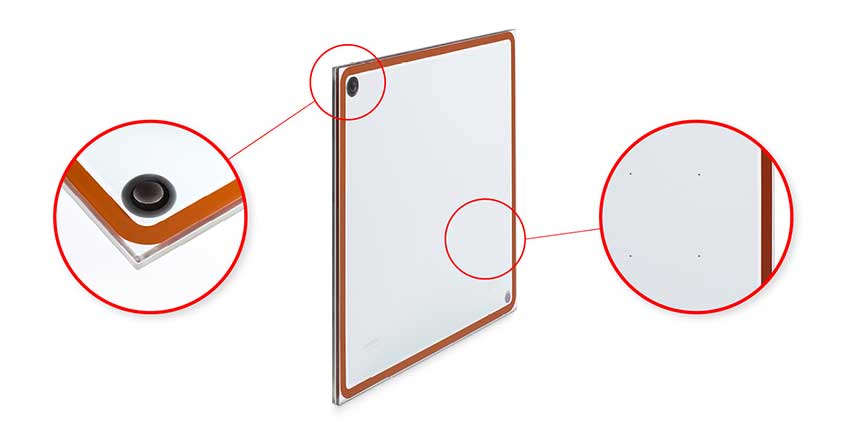
Photo courtesy of Vitro Architectural Glass
A couple of important components of vacuum insulating glass that are noticeably different from conventional insulating glass units are the vacuum port and the micro support pillars shown above.
One of the major benefits of VIG is that it allows for generous, aesthetically pleasing window-to-wall ratios without having to sacrifice insulation performance or occupant comfort. The extraordinary R-values of VIG deliver energy savings and reduced carbon emissions by way of lower BTU usage in buildings where these larger glass expanses are used.
In addition to energy conservation, the high vacuum chamber can effectively eliminate condensation on interior and exterior glass surfaces. The outstanding insulating capacity of VIG ensures interior glass surfaces remain free of condensation even when the outdoor temperature falls to -58° F. VIG also offers higher resistance against thermal expansion or contraction caused by temperature or other differences even if the elevation of the location where it’s used is largely different from where it’s manufactured. Further, the high vacuum chamber of VIG effectively blocks sound transmission with a weighted sound isolation from 39dB to 43dB, generating a remarkable soundproof effect against mid and low frequency noises such as traffic.
Architectural Louvers
Architects typically rely on louvers for HVAC systems, not only to provide needed airflow while protecting systems and ductwork from water damage, but also to create exciting and distinct exteriors. Louvers also create resistance to rainwater or hurricane-type winds, reducing the need for costly repairs to air handling equipment and building interiors from potential weather damage.
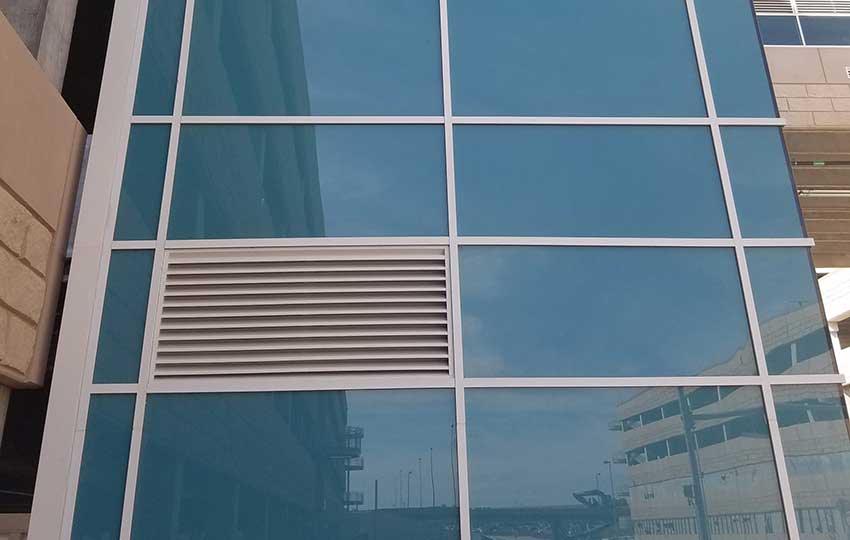
Photo courtesy of Airolite
Louvers can be incorporated into glazed curtain wall systems as long as the performance requirements, governing codes, and glazing system details are coordinated.
There are a number of common issues or questions that can come up regarding their use, which are touched on as follows.
Free Area
The free area of a louver is defined as the total louver face area, minus the airflow restrictions (blades and frame) through which air can freely pass within the openings. Free area is a major determinant of a louver’s performance capabilities. Louver frame depth, component profiles, louver blade spacing, and louver blade angle all play a role in determining the louver free area. Architects often become concerned about whether or not there is enough free area in a particular project and if free area of louvers can be increased (presumably to keep total louver area to a specific size). The best way to discern answers to these questions is to consult with manufacturers literature or representatives since it is their products that will be the ones designed, sized, and tested to produce particular results.
Notice
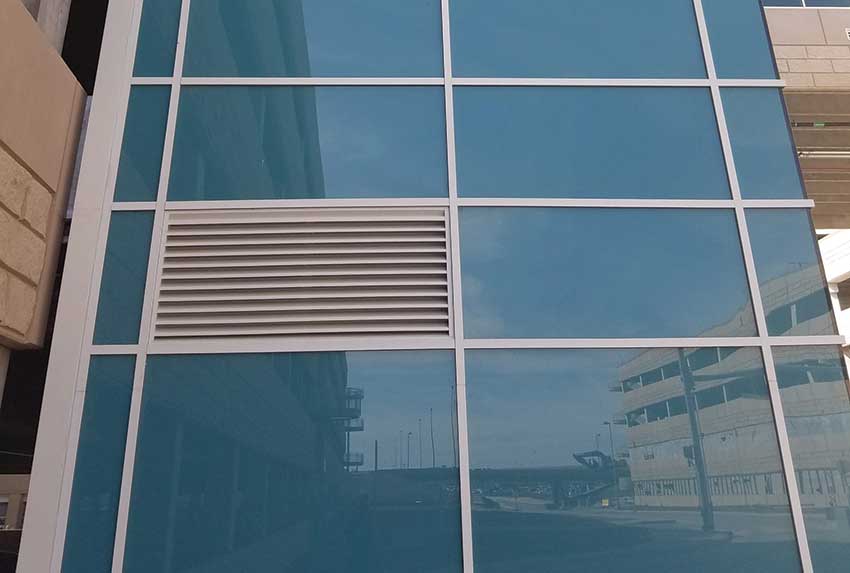
www.airolite.com
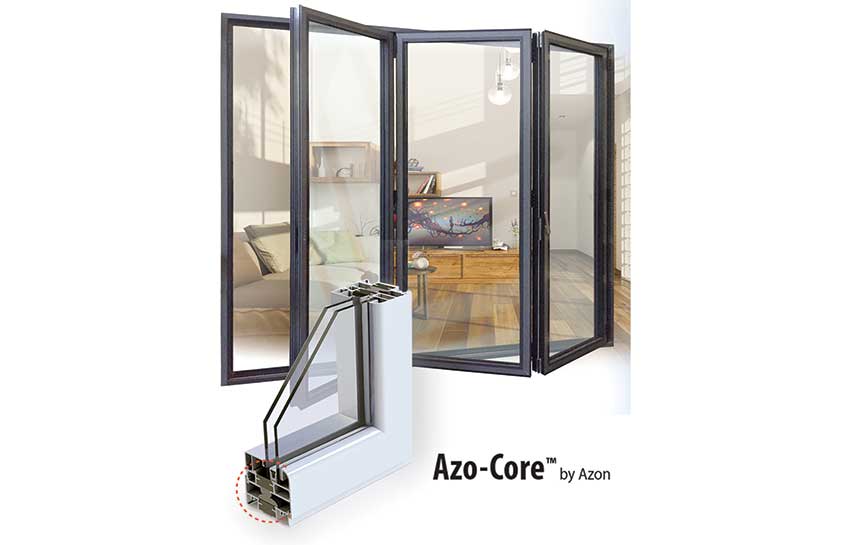
www.azonintl.com
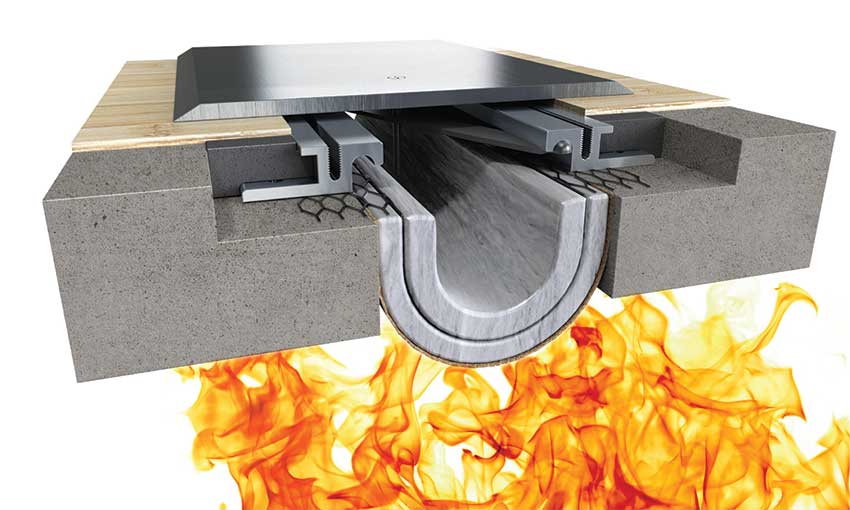
www.inpro.com

www.neolith.com
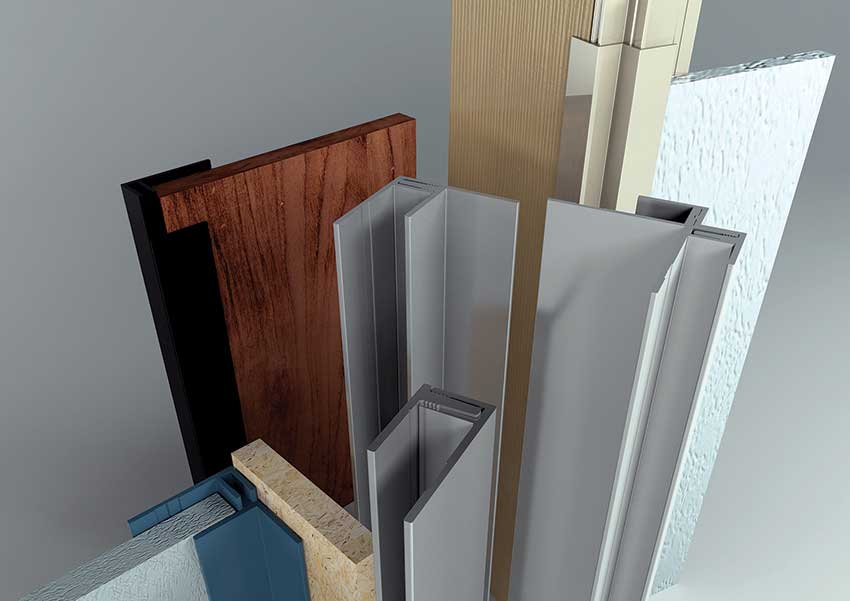
www.tamlyn.com

www.vacumaxvig.com









